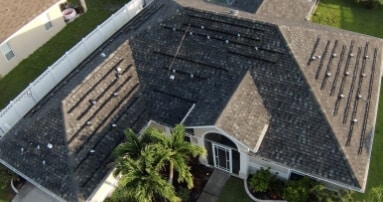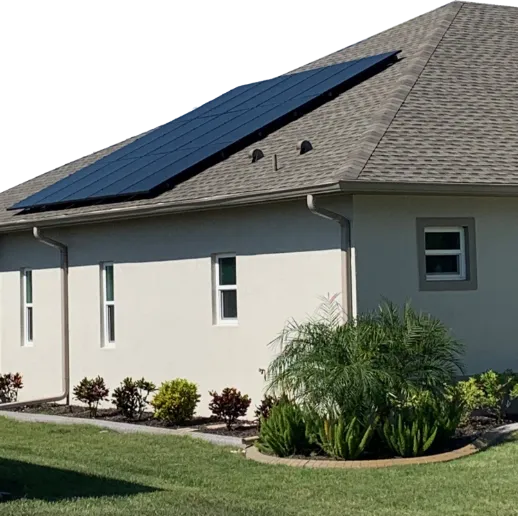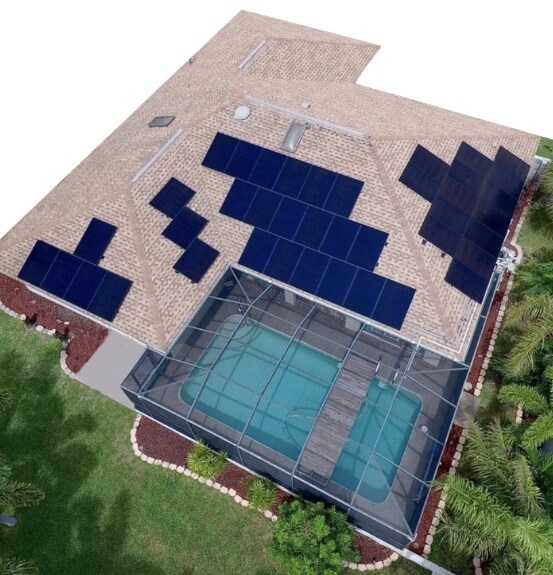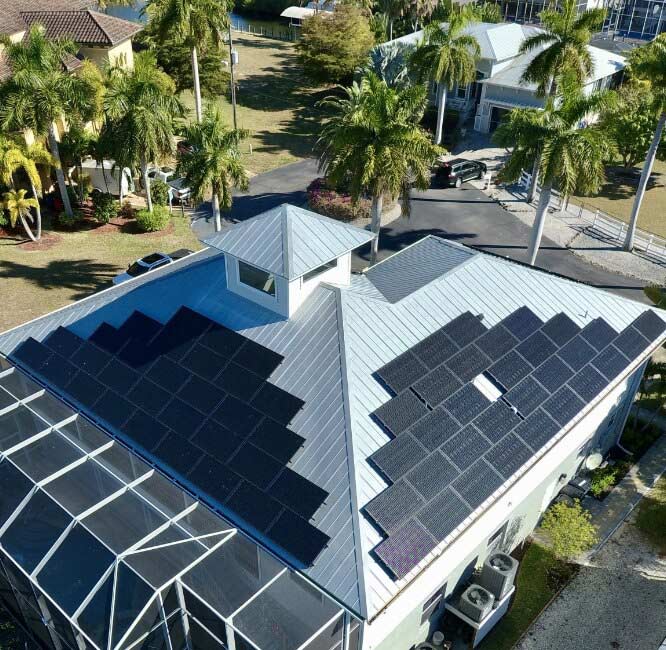The benefits of going solar in your home include:
Reduced Utility Costs. Residential solar systems can significantly reduce utility bills, particularly in sunny Florida. In fact, it is common for homeowners to see electricity savings in excess of $1,000 per year. Net metering enables the utility company to measure the amount of electricity that your solar system is returning to the electrical grid. During seasons of strongest sunshine, systems tied into the electrical grid can actually earn credits with the local utility company which will be used to offset bills later in the year.
Insurance against rising energy costs. Energy prices have increased steadily over the years. Obviously, producing one’s own energy is a savings in and of itself. Additionally, the credits a homeowner earns through net metering will increase proportionally to the rise in the cost of electricity.
Going solar is less expensive now. The cost of a solar electric panel installation has dropped by over 70 percent over the past ten years, making this more accessible to homeowners. Additionally, governmental incentives reduce the cost even further. For example, installations of solar systems during this year are eligible for a federal tax credit of up to 26 percent of the cost of your system. Numerous local solar incentives abound as well.
A solid long-term investment. The reduction of a homeowner’s electricity bill, credits earned from net metering and governmental incentives in the form of tax credits all go back toward the cost of installing a solar electrical system. The return on investment is now between five and ten years depending on the availability of incentives. Once your system is paid, the solar system will generate free electricity for many years.
Solar products are known for longevity. The quality and durability of solar products have improved dramatically over the years. Solar panels rarely fail because they contain no moving parts and aside from the wiring, there are no electrical components that wear out. The photovoltaic cells just absorb sunlight, converting it into electrical current. Advances in technology have enabled designers to overcome the elements. Electric solar systems now outlive most roofs and many manufacturers are confidently offering 25-year product warranties.
Enhancement to property value. Realtors confirm that solar-equipped homes hold higher property values and sell faster than homes without. Appraisers now include solar installations into their valuations of homes and many buyers jump at the prospect of inheriting the benefits of a solar home.
Environmental impact. Solar electric panels have gained popularity because they can help power a home while leaving zero carbon footprint. The sun is a powerful constant source of energy and can play a huge role in our country’s efforts to achieve energy independence.
Provide a boost to our local economy. The solar energy industry is growing steadily and is expected to expand much further. The jobs in this field cannot be outsourced and they pay very well. Solar Energy Solutions of America is located here in the Cape and contributes to our local economy.Reduced Utility Costs. Residential solar systems can significantly reduce utility bills, particularly in sunny Florida. In fact, it is common for homeowners to see electricity savings in excess of $1,000 per year. Net metering enables the utility company to measure the amount of electricity that your solar system is returning to the electrical grid. During seasons of strongest sunshine, systems tied into the electrical grid can actually earn credits with the local utility company which will be used to offset bills later in the year.
Insurance against rising energy costs. Energy prices have increased steadily over the years. Obviously, producing one’s own energy is a savings in and of itself. Additionally, the credits a homeowner earns through net metering will increase proportionally to the rise in the cost of electricity.
Going solar is less expensive now. The cost of a solar electric panel installation has dropped by over 70 percent over the past ten years, making this more accessible to homeowners. Additionally, governmental incentives reduce the cost even further. For example, installations of solar systems during this year are eligible for a federal tax credit of up to 26 percent of the cost of your system. Numerous local solar incentives abound as well.
A solid long-term investment. The reduction of a homeowner’s electricity bill, credits earned from net metering and governmental incentives in the form of tax credits all go back toward the cost of installing a solar electrical system. The return on investment is now between five and ten years depending on the availability of incentives. Once your system is paid, the solar system will generate free electricity for many years.
Solar products are known for longevity. The quality and durability of solar products have improved dramatically over the years. Solar panels rarely fail because they contain no moving parts and aside from the wiring, there are no electrical components that wear out. The photovoltaic cells just absorb sunlight, converting it into electrical current. Advances in technology have enabled designers to overcome the elements. Electric solar systems now outlive most roofs and many manufacturers are confidently offering 25-year product warranties.
Enhancement to property value. Realtors confirm that solar-equipped homes hold higher property values and sell faster than homes without. Appraisers now include solar installations into their valuations of homes and many buyers jump at the prospect of inheriting the benefits of a solar home.
Environmental impact. Solar electric panels have gained popularity because they can help power a home while leaving zero carbon footprint. The sun is a powerful constant source of energy and can play a huge role in our country’s efforts to achieve energy independence.
Provide a boost to our local economy. The solar energy industry is growing steadily and is expected to expand much further. The jobs in this field cannot be outsourced and they pay very well. Solar Energy Solutions of America is located here in the Cape and contributes to our local economy.



